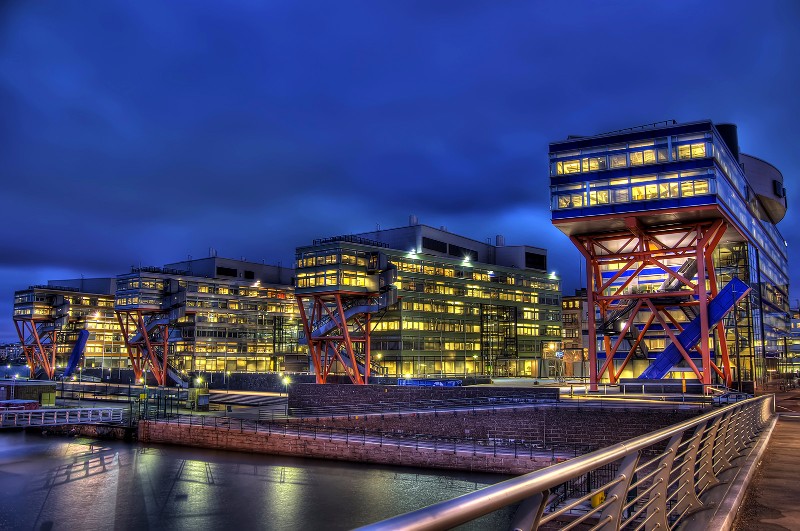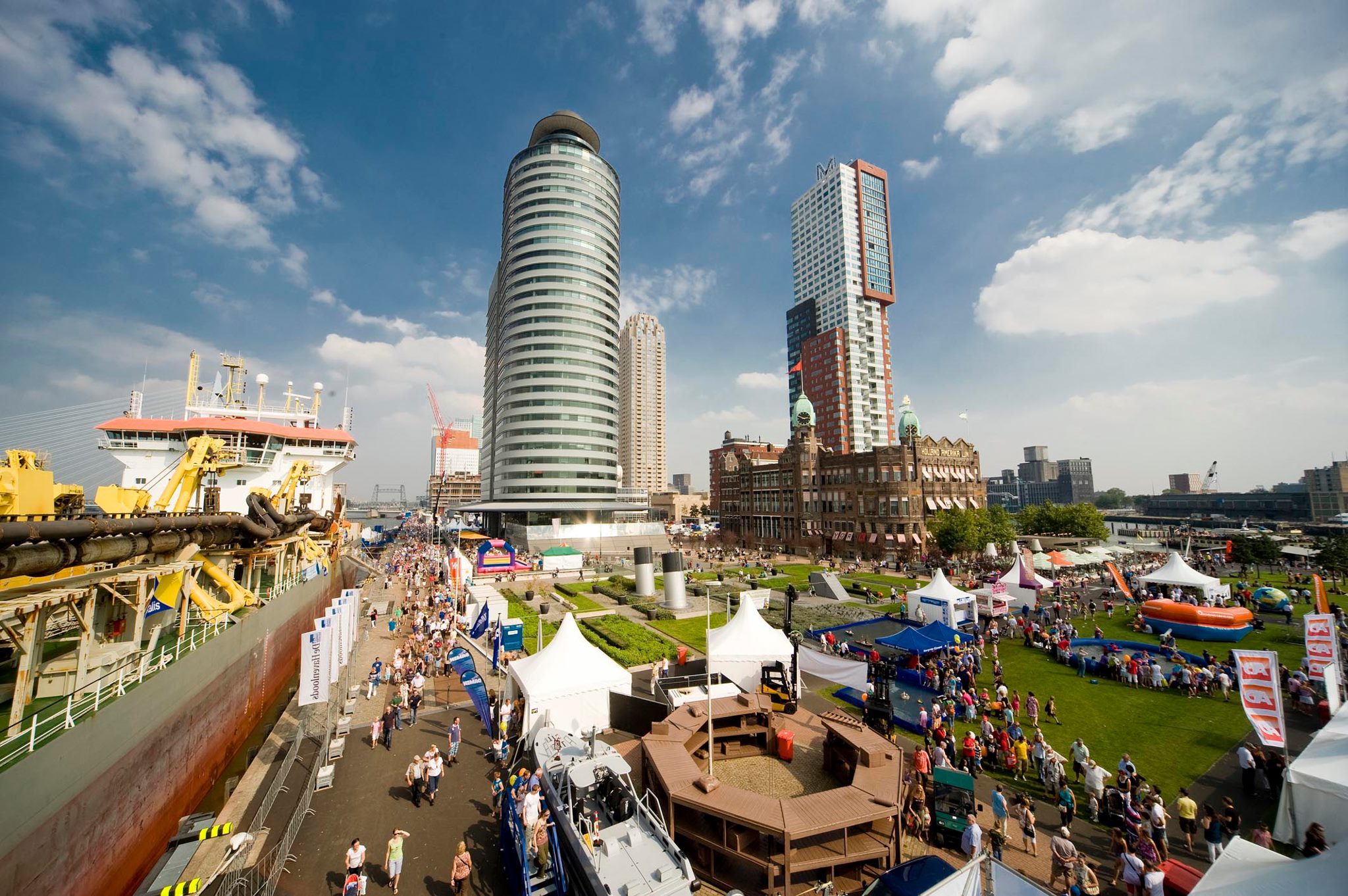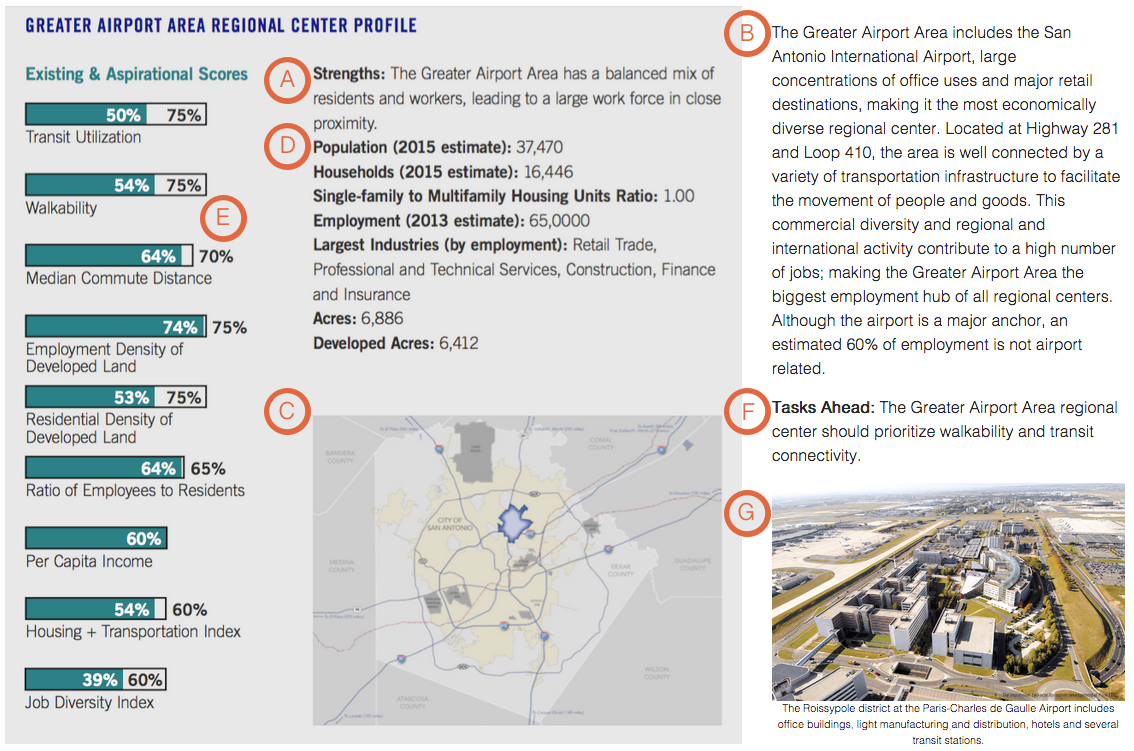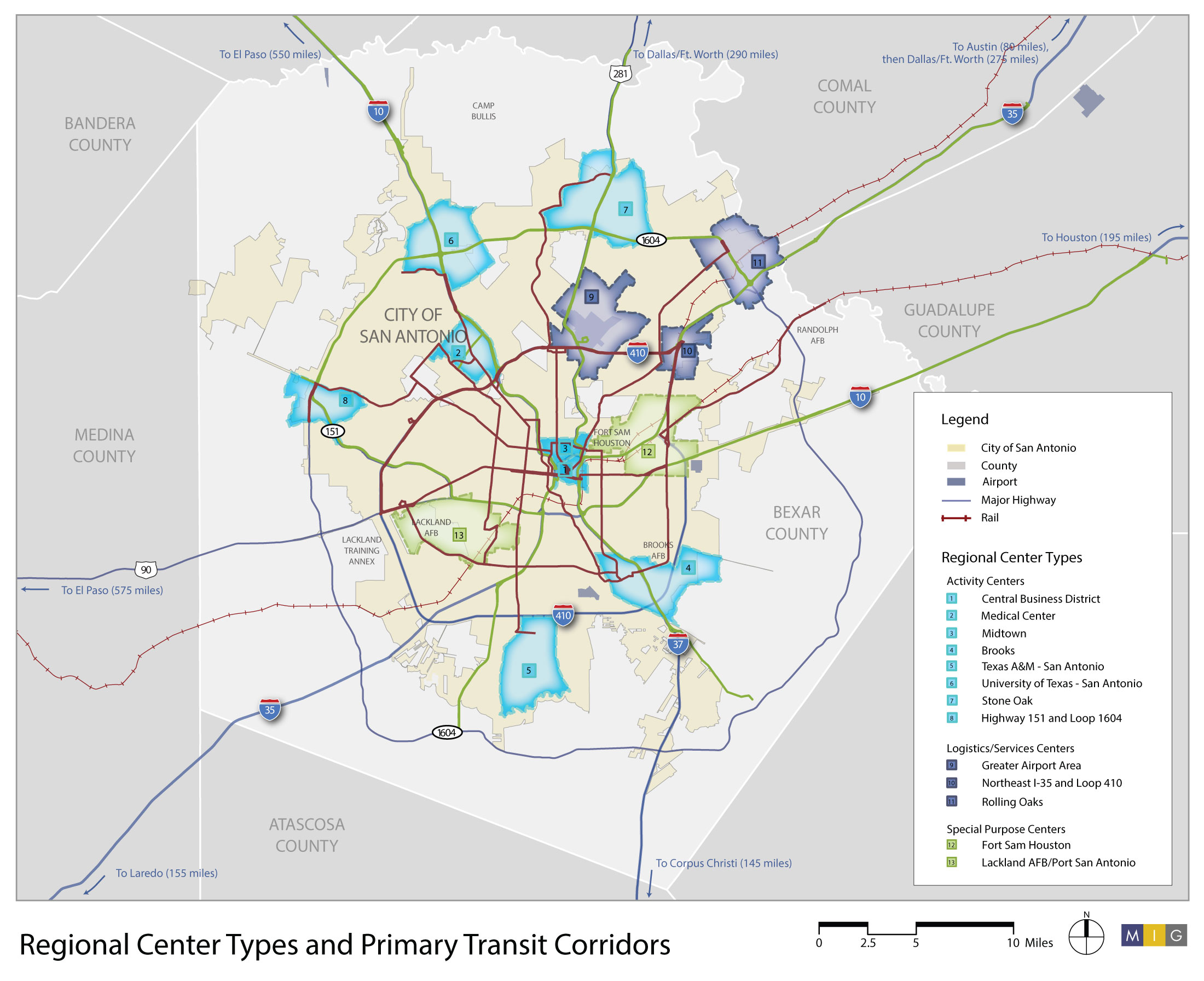Water Resources and Equity
Regional Centers
Section 2 Theme
Regional centers are one of the major building blocks of San Antonio’s city form and a major component of the Comprehensive Plan and the overall SA Tomorrow effort.
While most cities have one or two larger employment centers, we have 13. This provides challenges and opportunities. A major organizing element for the Comprehensive Plan is to focus growth in these regional centers, building on the existing pattern of development. They’re envisioned as new “places” where we live, work, and play.
New development is already gravitating to these centers and we can guide additional growth in these areas. Each center is different and its development will be influenced by its existing uses (particularly those oriented to military, aviation, or heavy industry). However, many of the centers are also well-positioned to develop as vibrant mixed-use places. They offer a variety of housing options and price ranges, allow higher-density and incorporate carefully designed and located amenities that will benefit both residents and employees of the center. Each center’s character can attract a different mix of businesses and employees. Therefore, San Antonio must focus its investment and infrastructure strategies on supporting and leveraging the unique identity and assets of each center.
THREE TYPES OF REGIONAL CENTERS
The 13 regional centers are grouped in three categories based on analysis of their existing conditions, unique traits and potential growth capabilities. It is important to note that they are not homogenous places. Although they cover large areas, each one includes multiple place types, urban forms and land uses.

Activity Centers
These areas have high concentrations of people and jobs in a mixed-use environment. They should be highly walkable and well connected by multiple types of transportation and transit. They should have an even mixture of jobs and housing and contain amenities that support residents, workers and employers within the centers and also throughout the city. Many are home to our educational, entertainment and cultural institutions.

Logistics/Service Centers
These areas have superior connectivity for the movement of goods and people including air, freight/ rail and roadway transportation. This positions them as launching points for the city’s exports and imports. These centers have large, coordinated areas of single uses, and concentrated nodes of mixed-use, with more jobs than residents. They provide goods and service to support businesses and residents adjacent to the center.

Special Purpose Centers
These areas have large employers, institutions and/ or concentrations of similar types of employment. These centers typically require or a barrier or buffer to separate their specialized activities from surrounding areas. They mostly contain primary employers and supportive services and amenities.
Water Resources and Equity

